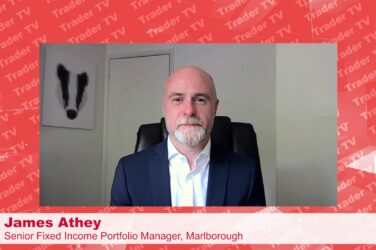

LedgerEdge, the distributed ledger corporate bond trading platform, is close to launching a UK multilateral trading facility before expanding into the US and the European Union in 2022.
David Nicol, chief executive and co-founder of LedgerEdge, and Michelle Neal, US chief executive of LedgerEdge, spoke on a webcast hosted by consultancy Coalition Greenwich on 20 October.
*Just Announced* Join @kmcpartland and guests from @_LedgerEdge_ for this new #MarketStructureUpdate.. Register at –> https://t.co/XB5bX4yJK1 pic.twitter.com/U8gczCnHuG
— Coalition Greenwich (a division of CRISIL) (@CoalitionGrnwch) October 12, 2021
Neal said: “We are focused on launching a UK multilateral trading facility imminently and a US alternative trading system in March 2022. We are also focused on our European MTF which will be a major launch later in 2022.”
She joined as chief executive of US operations in July this year and was previously head of US fixed income currencies and commodities (FICC) and global head of senior relationship management at RBC Capital Markets. Her prior roles include chief executive, markets at BNY Mellon and senior leadership positions in global markets trading, sales, financing and market structure-related businesses at Deutsche Bank, Nomura, and Natwest Markets.
Coalition Greenwich said in a report in July that although Europe had led the US in its share of electronic corporate bond trading volumes, the US is growing at a much faster rate.

Kevin McPartland, Greenwich Associates
Electronic trading in US investment-grade and high-yield bonds grew by 111% and 145%, respectively, compared to 61% in Europe between 2017 and 2020 according to the study.
Kevin McPartland, head of research in the Coalition Greenwich market structure and technology group, said in the report: “Changes in market behavior will come only when traders see new tools improving execution quality, as old habits die hard. However, with increasing evidence that protocol choice is key to market liquidity, we expect market participants in all regions to transition to the trading strategies, investing strategies and securities profiles that most reliably achieve best execution.”
Execution
LedgerEdge was launched with co-founder David Rutte in 2020 and has been building the platform this year following consultations with market participants.
Last year the firm launched working groups with 18 sell-side firms to make sure that it was addressing real pain points in bond trading. For example, it is difficult to trade large blocks, illiquid names or anything outside the top 2,000 most quoted securities.
Nicol said: “It’s still largely a market with lots of different liquidity pools, and the challenge for traders is to find the right pool to get a particular order done.”
In addition some venues have lots of data leakage which maybe acceptable for certain types of trades but not for larger complex orders in illiquid names.

David Nicol, LedgerEdge
“We use distributed ledger technology to give users ownership and control of their data, trade on a point to point basis, and achieve fundamentally better execution,” added Nicol. ‘This has been an idea in the works for years.”
He continued that DLT is now ready for institutional grade use in a fully regulated market.
“You are able to essentially give everyone a unique picture of the liquidity that they are able to see in the market,” said Nicol. “DLT ensures that everyone is seeing the right version of the truth based on what they are sharing and with whom.”
Using DLT also means a single counterparty can decide to start a new relationship on a bilateral basis with the click of a button. Direct bilateral connections have historically required extensive integrations that have to be built and then expensively maintained over years.
LedgerEdge clients can choose either bilateral or multilateral trading and DLT provides the ability to use smart orders – an order that reacts to market conditions but only reveals itself when certain conditions are met.
“Smart orders are getting a lot of excitement from trading desks and algo teams,” added Nicol. “They allows firms to do a lot more with a lot less and turbocharge their electronic trading and algo businesses.”
Data
One of the pain points for the sell side is that they provide the trading data but then have to pay to get it back in the form of data products or data feeds. Neal continued that data is critical for managing risk, supporting regulatory models, getting sharper pricing and using sophisticated models to ensure efficient use of financial resources.

Michelle Neal, LedgerEdge
“It is a tremendous economic burden on firms,” she added. “I feel very good that we are taking a much more sensitive approach.”
Nicol added that using DLT allows LedgerEdge to keep their promise to customers of not owning or controlling their data
“It allows us to make that promise, not just from a business or legal perspective but from a real functional perspective,” he said. “I would also say that it sets up the market for new types of interaction and engagement.”
He explained that interaction on a bilateral basis is simply the combination of messages that go between those two nodes in the DLT ecosystem. Therefore it is easy to build new patterns of interaction such as a portfolio trade or a new type of request-for-quote.
“It allows us to be very agile in that way,” added Nicol.
Opportunities
In addition to secondary trading, Nicol said other potential opportunities are improving the workflow for primary issuance and in the settlement cycle. For example, in April the European Investment Bank issued its first digital bond on a public blockchain.
In the settlement process there are a spectrum of use cases for stablecoins or payment systems that are delivered on DLT.
“We see a great opportunity in giving our users the ability to choose how, when and where they want to settle,” said Nicol. “We’re on the cusp of a real settlement revolution.”
DLT also enables more assets to be managed more efficiently through their lifecycle. LedgerEdge said this allows custodians to offer new services to investors while cutting costs and improving asset mobility.
Nicol said in a blog that after launching corporate bond trading, LedgerEdge will look to integrate digital asset issuance platforms, starting with fixed income and fixed income-like assets.
“LedgerEdge aims to be a more effective market to support the movement of any digitized asset – any time a market participant wants to interact with another one regarding a digital asset (searching, pricing, negotiating, trading),” he wrote.
The firm will work with regulators and market participants to expand these capabilities to new asset classes.
Nicol added: “If DeFi finance is to take over financial plumbing, it is imperative to integrate and work with applications no matter what blockchain platform they use.”





